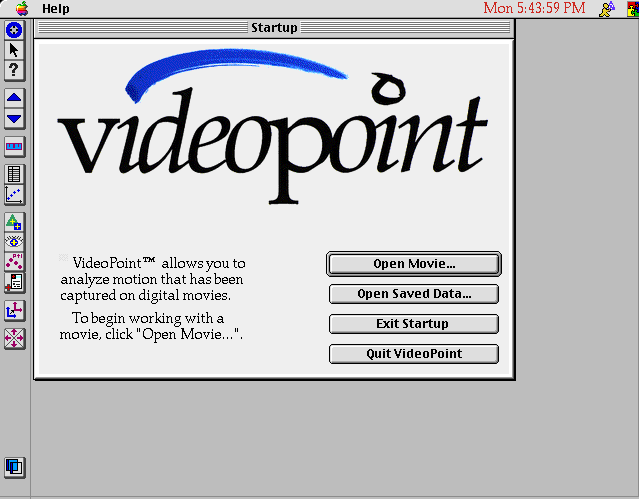

Last fall I became familiar with the Boston Consortium by way of a proposal submitted to the Georgia Department of Education for participation with the Virtual High School Project. This is a federally funded project that involves eighteen states as of fall 1998.

My School, South Gwinnett High School , was selected to participate in
piloting the VHS program in Georgia for fall 1999. Joe O'Neal is currently
participating in online training to learn how to create a virtual classroom
model for his AP Psychology course. After becoming familiar with the VHS
project, and excited about the progress being made in the area of Internet
classrooms, I elected to participate in an Internet driven course  myself.
myself.
The Concord Consortium supports the Virtual High School and several other projects. I elected to participate in their INTEC mini course offering for Spring of 1999 to specifically learn how to use and assess inquiry based teaching. Each of the mini courses allows you to chose a tool for inquiry that best suits your mathematics or science classroom. I chose the tool VideoPoint which is a mathematics/physics software. The software provides students the opportunity to investigate motion through tables, charts, graphs and functions.
The students are allowed to select the number of obje cts from each
video that they wish to investigate. They then can manually select the point
or points in each frame. This allows them to generate their own data to
use for investigation. They are then provided the opportunity to decide
between graph types, overlay, and axis. In this investigation, I used the
QuickTime demo movie** to follow the path of a circle. I then plotted the
points. First x-position vs. time and then y-position vs. time. What I hope
for students to find in this investigation is the correlation of circular
motion over time to the sine and cosine curves. VideoPoint does a beautiful
job demonstrating these curves using the parameter of time. The software
comes with a movie that uses a ferris wheel from Hershey park that my students
will be using to complete this investigation
cts from each
video that they wish to investigate. They then can manually select the point
or points in each frame. This allows them to generate their own data to
use for investigation. They are then provided the opportunity to decide
between graph types, overlay, and axis. In this investigation, I used the
QuickTime demo movie** to follow the path of a circle. I then plotted the
points. First x-position vs. time and then y-position vs. time. What I hope
for students to find in this investigation is the correlation of circular
motion over time to the sine and cosine curves. VideoPoint does a beautiful
job demonstrating these curves using the parameter of time. The software
comes with a movie that uses a ferris wheel from Hershey park that my students
will be using to complete this investigation .
.
The next step in the investigation is to have the students play with the axis in the movie. The data in both the table and in the graphs are directly effected. This allows the students to see with ease the effect the position of the origin has on the data and the location of the graph. After the initial investigation, phase shifts can be addressed using this or a similar investigation. By placing the origin at the center of the QuickTime Q, the students should see the point (0,0) and the point (0,~-1) adding to the correlation between the periodic functions sine and cosine and the x-position and y-position data over time. The students need to be aware of where they began gathering data. For this particular example, I began at the negative x-axis and proceeded in a clockwise motion. This changes the best fit curve from the parent function.
The final part of the investigation would be to have students try to find a model that best fits their data. The VideoPoint Software has a location where students can create their own function models manually [the blue M in the upper right corner of the graph takes the student to the pop up screen where modeling occurs] or by having the software fit the best model to the data [ the purple F in the upper right corner of the graph takes the student to the pop up screen where curve fittings are done by the software]. The manual fitting is exciting to a teacher since the students are given the general form of the various functions with the opportunity to find the values for the variables that affect the function. As an extension, students can be asked to move their axis and find the new equation based on the shifts to the data. If the students appear to be struggling, or feel that they have the best fit, the curve fitting option provides them with the best fit curve generated by the software. Students can then compare, adjust or justify their solution in contrast to the solution offered by the software.
**Note: I selected the QuickTime demo movie to point out that the VideoPoint software has the capabilities of being used on one of the included demo movies, a movie downloaded off the internet that holds student interest, or if equipment is available a student generated movie that has been digitized and uploaded as a .mov QuickTime format.
From my internet course I was exposed to online discussion, multi-tasking and a great deal of computer and internet technology. On a negative note, internet courses are difficult to monitor since the proctors are not present. Student pacing is independent, but the work load requires [at least for this particular mini - session] a specified and rather quick pace. Multiple activities and discussion participation were expected on a biweekly basis. The activities ranged from reading specific articles to practicing certain skills with your predetermined tool for inquiry. Since time is a factor for all levels of students it seems that a multi -tiered approach to assessment, participation and understanding might be in order. I am in the process of conducting my practicum and will be observed by Eric Branilower from an outside group appointed to monitor the progress of the consortium, specifically the INTEC project, on Monday May 17th. I have already used the VideoPoint Software with my students, and will be modeling an investigation for Mr. Branilower's observation.
Student feedback about the software has been positive. I am not certain how to overcome the awe that the students have when they are first exposed to the video capabilities of the software. I do not want the point of investigations to be lost in the goodies that the investigation happens to come along with. If you have any questions, or comments about this mini-session, my investigation and its progress or the VideoPoint software, please feel free to contact me at Lisa_Stueve@gwinnett.k12.ga.us.